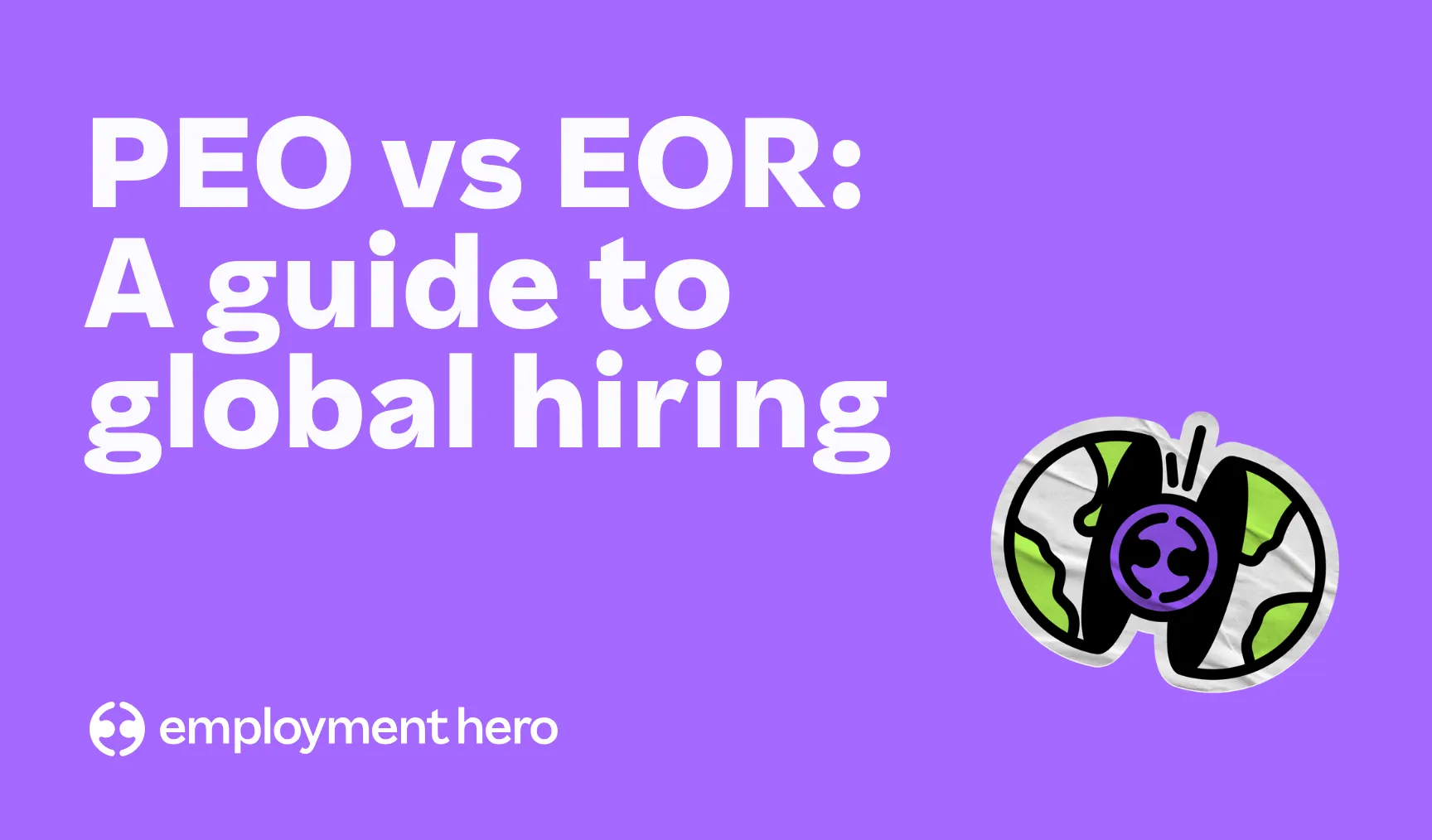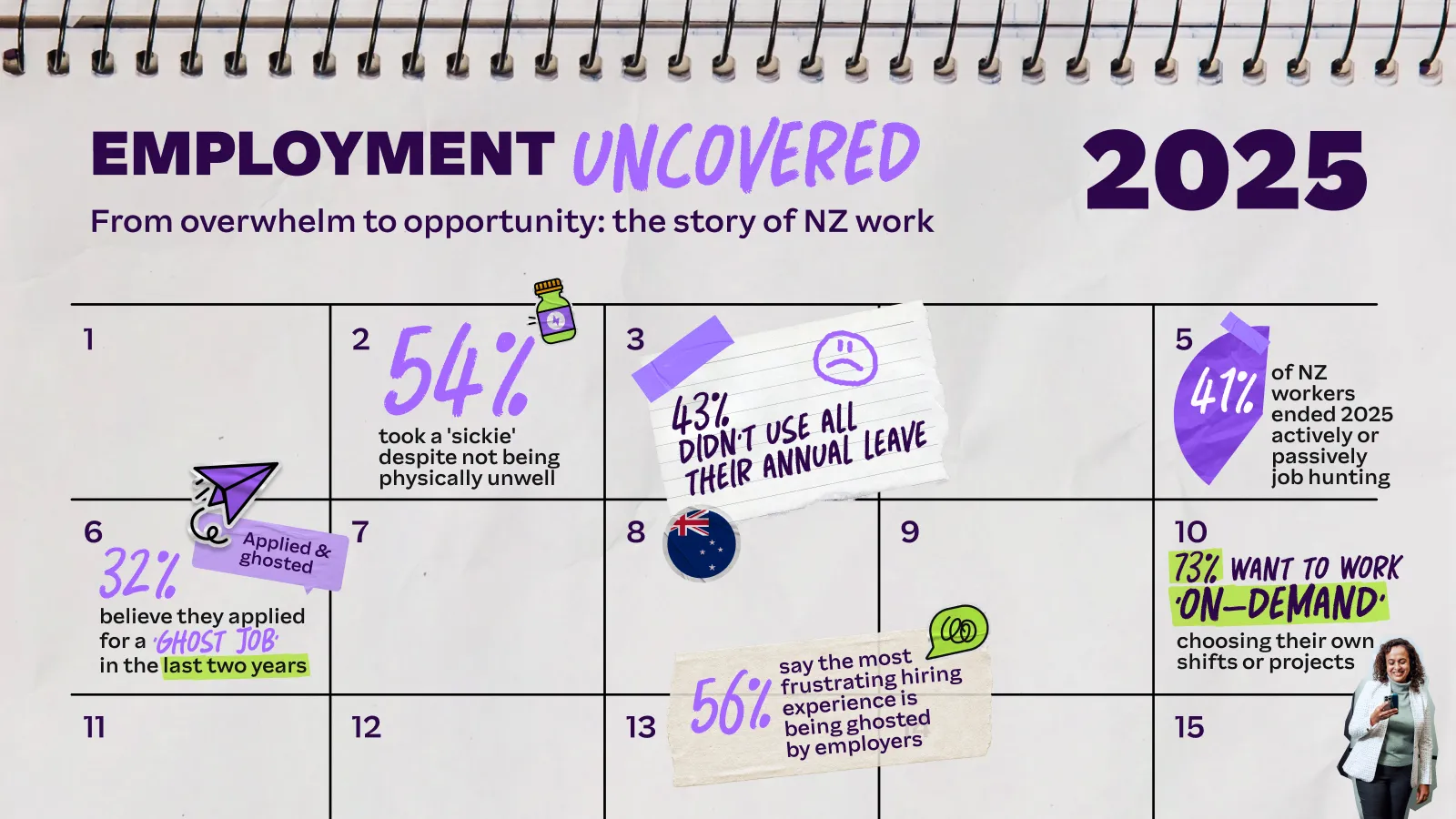How Probationary Periods Work [Employer’s Guide]
As it’s difficult to gain a completely accurate insight into the person’s suitability from the hiring process alone, this is where the probationary period comes in.

Hiring employees is a challenging process and even more so if you’re new to the game as a small business. Let’s face it – finding the right hire is hard.
It’s often a balancing act between identifying someone with the most suitable skills and someone who will be a great cultural fit or add, who shares the same vision as the employer. It’s a challenge to find your star candidate, so chances are there will be times where things just don’t work out. The interview process is only a small glimpse into what an employee is actually like.
Since it’s difficult to gain a completely accurate insight into the person’s suitability from the hiring process alone, this is where the probationary period comes in.
What is a probation period?
Probationary periods provide employers with an opportunity to assess a new employee’s skills and how they fit into your working environment. It gives both the employer and the employee flexibility at a point where they are still establishing if the role is right for them.
From an employee’s standpoint, probationary periods give them additional time to reflect on the role and decide if the organisation is the right fit for their skills and capabilities. For both parties, it is an excellent way to evaluate the employee’s suitability for the role.
Probation periods can be used both for a new employee to a company, and for an existing employee who is taking on a new role in the organisation.
How can probation periods be useful?
A probation period is an effective means to measure performance and quality of hire using talent acquisition metrics. For an employee to be considered a quality hire, their performance and tenure must exceed the value required to source, train, and develop their skills.
Quality-of-hire metrics are highly useful in understanding the effectiveness of your company’s hiring processes. If we look at the quality-of-hire on a very basic level, it involves analysing whether the costs to recruit and hire someone are higher than the value returned by that individual. Once they have passed their probation period, a new hire is no longer expected to meet the foundational criteria for quality.
You should also bear in mind that the value an employee delivers to your business will vary from person to person. The longer an employee is with your organisation, the longer they have to contribute to value creation.
How long are employee probation periods?
Probationary periods in New Zealand can be for any amount of time. However, the exact time frame should be ‘reasonable’ (according to Employment New Zealand) and should be specified in the written employment agreement.
While the word ‘reasonable’ can seem a little ambiguous, Employment New Zealand explains that the probation period should be used in good faith. Generally speaking, employers opt for a 3 month to 6 month probationary period. However, it is important for the length of the probation period to make sense in connection to the job itself, and the employer. Employers should think carefully about a length that will work for you, and remember that a lengthy probation period can turn off highly talented individuals from considering employment at your business.
One additional point – a probationary period cannot be put in place following a trial period. You may have either a probation period or a trial period.
What are the employee entitlements and employer responsibilities?
It’s vital to remember that employees on probation periods are still entitled to the same entitlements and minimum rights as any other employee of the business. This includes four weeks’ paid annual leave per year, public holidays, pay that meets the minimum wage or above, and rest/meal breaks.
As an employer, you must give the employee ongoing and appropriate training for their role. You’re encouraged to hold regular probationary reviews throughout the trial period to provide recruits with the necessary guidance, support and opportunities to do the job effectively.
If you are finding issues with their work, you should let your employee know and give them the opportunity to improve. They should also be aware of what good performance in their role looks like.
These steps ensure both parties are aware of what’s required to successfully pass the probation period and any possible issues that need to be addressed. To properly communicate expected learning and performance goals during probation, all new employees should also undergo a thorough induction process.
Can you terminate an employee during the probation period?
An employer can always choose to terminate an employee’s employment. However, if an employer decides to dismiss the employee during the probation period, they must follow a fair process and show a valid reason for dismissal. They should follow the same steps as they would if making this decision at the end of the probation period, which includes giving an initial notice to the employee with their reasons, and giving the employee a chance to respond to the concerns.
On dismissal, the employee is entitled to be provided with the probationary notice period. Where the employment agreement is silent on the notice period, then the employee is entitled to a ‘fair and reasonable’ notice period, depending on the role.
If the employee believes that the decision is unfair and/or processes have not been correctly followed, they are entitled to raise a personal grievance and make an unjustified dismissal claim against you.
Can employees resign during the probation period?
Yes. Just as the employer can terminate employment, employees are entitled to resign at any time. They may realise that the job doesn’t suit them or that they don’t fit the workplace environment.
Full-time and part-time employee resignation notice period
The notice given by the employee should be the one reflected in their employment agreement. If one is not specified, the notice period again should be seen as ‘fair and reasonable’ in regards to the length of service and the role.
It’s worth noting that employees can request payment in lieu of notice. This means that the employer agrees to pay the notice period without the employee having to work. The final decision to allow payment in lieu of notice is at the discretion of the employer.
Casual employee resignation notice period
Due to the nature of casual employment, probation periods are uncommon in casual employment agreements. An employer is not required to provide a casual employee with notice of termination. Likewise, a casual employee is not required to provide an employer with notice. However, this does not mean any decision to dismiss should not follow a procedurally fair process and be based on a valid reason.
Reasons for employee resignation during a probation period
There are many reasons that may cause an individual to resign during this period of employment. Some factors may include:
- The workload is more than they can handle.
- The work isn’t engaging, challenging or what they signed up for.
- Workplace culture is not enjoyable and colleagues may be hard to get along with.
- They want to spend more time on family responsibilities and the hours just aren’t flexible enough.
- The company is unethical or did not live up to the expectations agreed upon.
Top tips for managing an employee on a probationary period
1. Define clear expectations in the employment agreement
Set out performance and learning goals when you send over the new employment contract to the employee. By clearly managing the expectations, you provide certainty to your new employee as to what they need to achieve to pass the probation period.
2. Regularly review employee’s performance
Regularly check in with your new hire to get a real sense about how they’re progressing. This gives your new employee every opportunity to raise questions about the business and their role. At the same time, you get to see their attitude and personality up close, which will help you make a call on whether they’re a good fit with the other staff members and your company culture.
3. Assign real work
It sounds obvious, but if you don’t give your new hire suitably challenging work during their probationary period, how can you possibly assess whether they are right for the role? Make sure that they’re getting a fair go at the role.
4. Provide mentoring
By providing a mentor you can help new employees better get used to your company’s working environment. With ready access to an experienced existing employee, they know who to turn to for advice, information and support. This helps improve their self-confidence and ability to meet expectations in the probationary period. It also allows them to understand what good work looks like.
What happens when the probationary period ends?
Before the end of the probationary period, you must make a decision as to whether you want to keep the employee, or if the circumstances warrant, make steps towards ending their employment.
If you’re happy with the employee’s performance, you simply keep the employee in your team, the probationary period ends and their employment continues automatically.
If you’re not happy with their performance, you must follow a fair process of assessment, and must inform the employee of what your issues are, and your intention to end their employment. In this situation, the employee has a right to respond to the points raised and have the employer consider them before any further steps are made towards dismissal.
The wrap-up
A probation period is an effective way for both employers and employees to assess a particular role and determine whether they can be of value to the business. It’s also a good method for checking whether you’ve got the right person for the job, which is ultimately what everyone wants in this situation.
When including a probationary period for new hires in your business, ensure that you’re ticking all the boxes necessary from a legal standpoint and that you’re meeting your responsibilities as an employer. Probation periods can be an excellent tool for getting the right team together, but they can be tricky. Employers can be at risk if they rely on the probationary period clause to terminate and fail to follow the correct process.
Getting help with probationary periods and doing all you can to ensure new starters pass their probationary periods with flying colours is just the tip of the HR compliance iceberg.
Download our Essential Guide to HR compliance to make sure you’re doing the right thing by your business.
Disclaimer: The information in this article is relevant as at 22 December 2023, and has been prepared by Employment Hero Pty Ltd ABN (11 160 047 709) (Employment Hero). The views expressed herein are general information only and are provided in good faith to assist employers and their employees. The Information is based on data supplied by third parties. While such data is believed to be accurate, it has not been independently verified and no warranties are given that it is complete, accurate, up to date or fit for the purpose for which it is required. Employment Hero does not accept responsibility for any inaccuracy in such data and is not liable for any loss or damages arising either directly or indirectly as a result of reliance on, use of or inability to use any information provided in this article.
Related Resources
-
 Read more: PEO vs. EOR: A guide to global hiring
Read more: PEO vs. EOR: A guide to global hiringPEO vs. EOR: A guide to global hiring
Learn the key differences between a PEO and an EOR. Discover why an EOR is the smarter, safer way to…
-
 Read more: How to build a global team without a local entity
Read more: How to build a global team without a local entityHow to build a global team without a local entity
Learn how to streamline your hiring and expand your NZ business globally with an Employer of Record (EOR) without the…
-
 Read more: Employment Uncovered: Inside the Story of New Zealand Work in 2025
Read more: Employment Uncovered: Inside the Story of New Zealand Work in 2025Employment Uncovered: Inside the Story of New Zealand Work in 2025
Inside the story of NZ work in 2025. From rising ‘sickies’ to hiring fatigue, see how Kiwi work patterns are…























